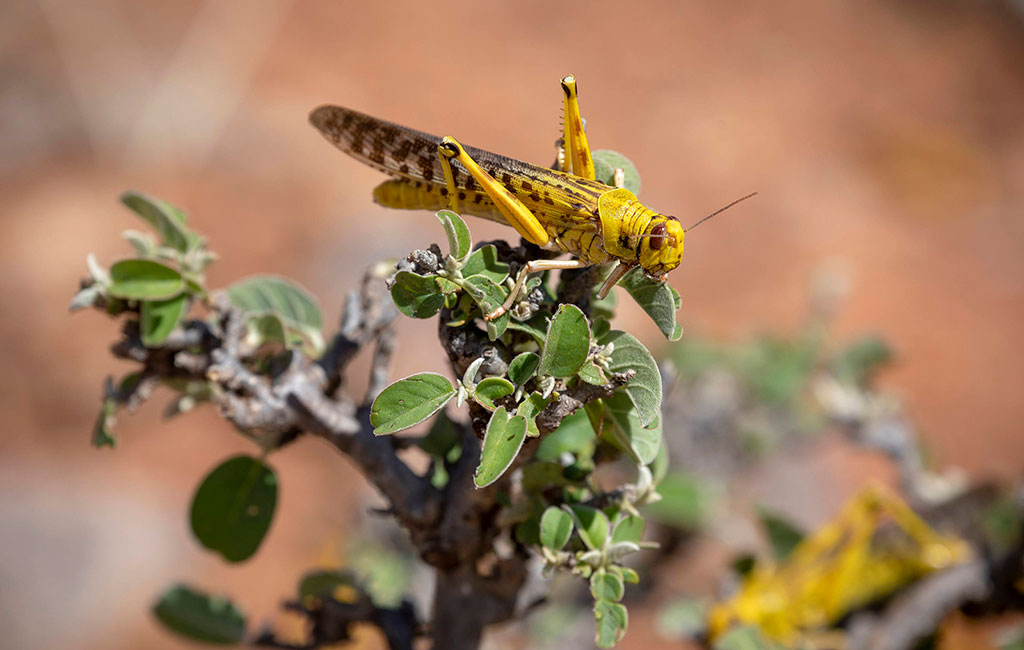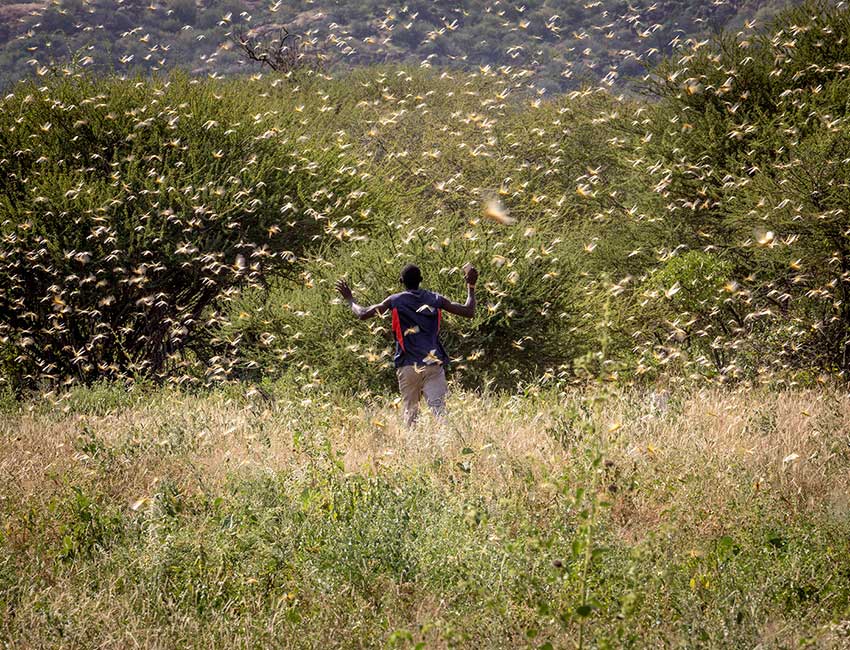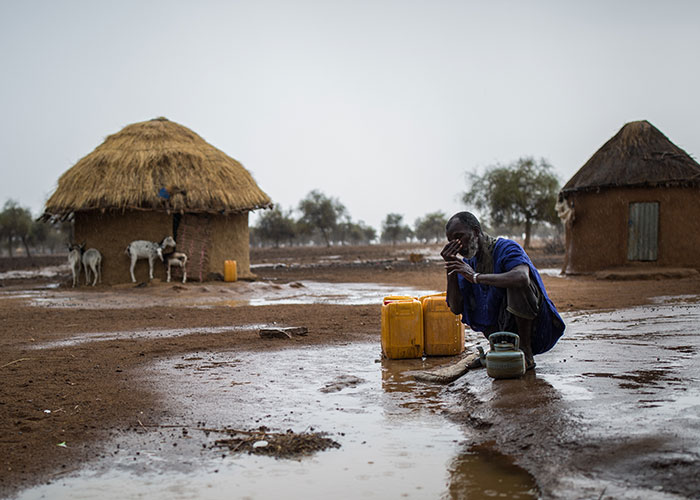The coronavirus impact
With locusts ravaging East Africa’s countries, communities now face the additional threat of the coronavirus outbreak. This is putting an immense amount of pressure on already fragile infrastructures.
Hunger levels are rising in the region, with 19 million people already experiencing a food crisis prior to the virus.
Access to pesticides, crucial for eradicating the locusts, was already challenging. This new pandemic has brought with it border closures, impacting the ability to access pesticides and deal with the locust crisis.
In Somalia, many women and farmers in the community resorted to desperate measures to control the locusts in the past. But with the coronavirus now having a huge impact, they are not certain what the future holds. If they lose their next harvest, they will not have enough to feed their children until the next rainy season.
The coronavirus outbreak has also hit Somalia’s healthcare system hard.
“We’re seeing health workers contracting Covid-19 and therefore further jeopardising the ability for communities to access healthcare,” says Hajir Maalim.
With private healthcare providers also closing their services from fears of a spread of the virus, and the threat of another potential locust swarm, it will erode the limited capacity to respond to these shocks at a community level.
“I haven’t seen these levels of need in my life,” continues Hajir. “We’re quite worried about the situation for the most vulnerable populations in Somalia.”
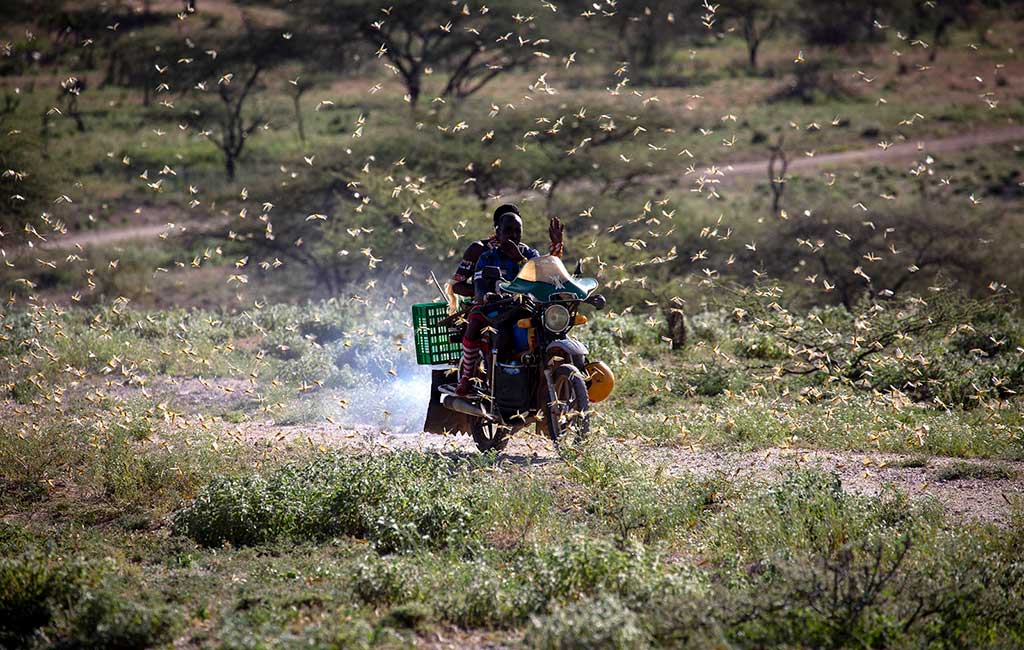
The impact on communities
With locusts invading endless hectares of crops and farmland, the impact on families could be catastrophic. The infestation now threatens to drive millions of people across East Africa deeper into a hunger crisis and increase the risk of children dying from malnutrition.
East Africa currently has high rates of undernutrition, with just over 30% of the population already affected. The locust emergency could make this crisis worse.
For Somalia and Ethiopia, this is the worst outbreak of locusts in 25 years. In Kenya, communities have not faced an infestation like this in 75 years.
Fighting locusts
Local communities are doing what they can to try and fight the locust swarms to protect their crops. Methods include blowing whistles and banging pots to scare the locusts away. But this is not enough.
The most effective way to prevent the pests from spreading and stop eggs from hatching is through ground and aerial pesticide spraying. The UN’s Food and Agriculture Organisation and the Ministry of Agriculture are already doing this throughout Kenya.
But because of ongoing conflict and insecurity in Somalia, access to aerial spraying is almost impossible. As a result, the Somalian Government declared a national emergency in the country in early February.
Spraying will be effective in stopping further spreading, but for some communities it is already too late.
“[The locusts] cleared all the vegetation before they were sprayed. Now we have the young ones or hoppers that are eating the remaining vegetation, and they are very vicious,” says Henry Sangale, a community leader in Isiolo County, Kenya, one of the areas where Action Against Hunger works.
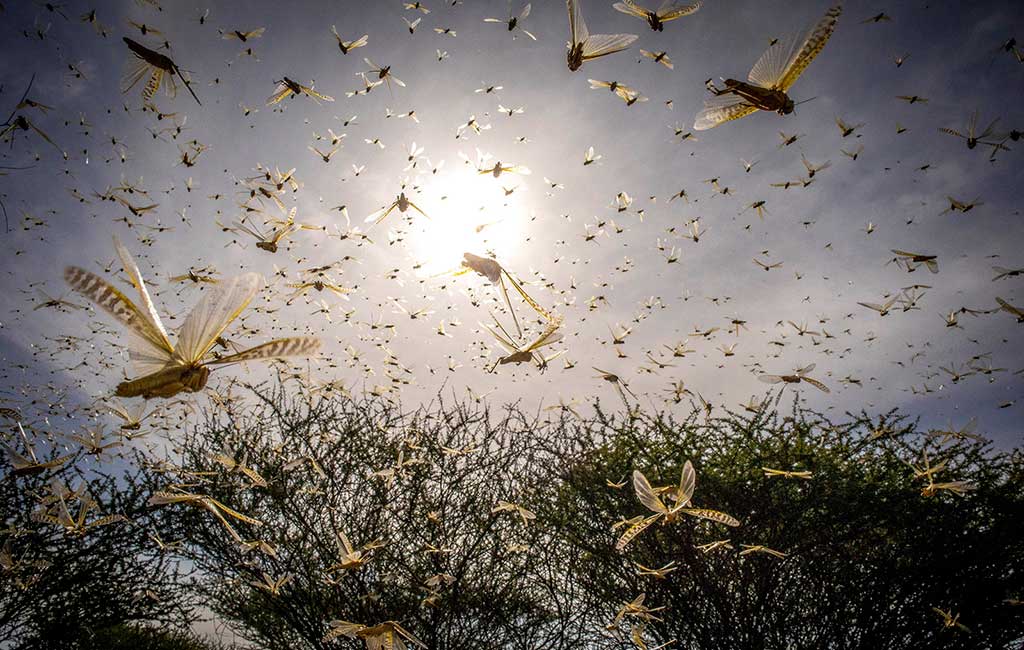
Relief for families
We’re rapidly responding to the crisis and providing immediate relief for families suffering from hunger.
Our teams are expanding cash assistance programmes and stocking up on supplies to manage the next rainy season. The locust outbreak could increase malnutrition in Ethiopia, Kenya, Somalia, South Sudan and Uganda and we’re collaborating with governments to ensure we build more capacity to handle this.
“The scale of the locust infestation is like nothing that has been seen for decades,” says Hajir.
“What’s worse, it’s occurring in an area where millions of people are already experiencing crisis levels of food insecurity.
“We don’t yet have a handle on the scale of the destruction, but it is inevitable that this infestation will heap more misery on what is an already desperate situation. Failure to respond effectively to this latest crisis could have catastrophic consequences in the coming months.”
We’re closely monitoring access to markets, access to water for both people and animals, surges in cases of diarrhoea or other water-borne diseases and admission rates to community-based nutrition programmes. Now we’re also scaling up our work to address and respond to the coronavirus pandemic in the region. Our local staff are already in some of the hardest to reach places, making sure that vulnerable communities have access to the food, water and sanitation they need to survive.
The damage caused by the locusts could become more apparent in a few months, especially with the additional coronavirus threat. Families will have lost vast amounts of crops, meaning there will be food shortages. With governments overwhelmed by the scale of the crisis, we need more funds and support to address the immediate and long-term needs of communities.
“Even before the locusts arrived, aid agencies were struggling to meet the needs of the people,” says Hajir Maalim.
“Record droughts, record flooding, record swarms. For the people trapped in this latest crisis, climate change isn’t a threat, it’s a waking nightmare.”
While the world is closely watching the coronavirus outbreak across the globe, a hunger crisis is building everyday in East Africa, one that will see millions of people pushed to the brink of starvation.
Photo credits: ©FAO/Sven Torfinn. Editorial use only. Copyright FAO
